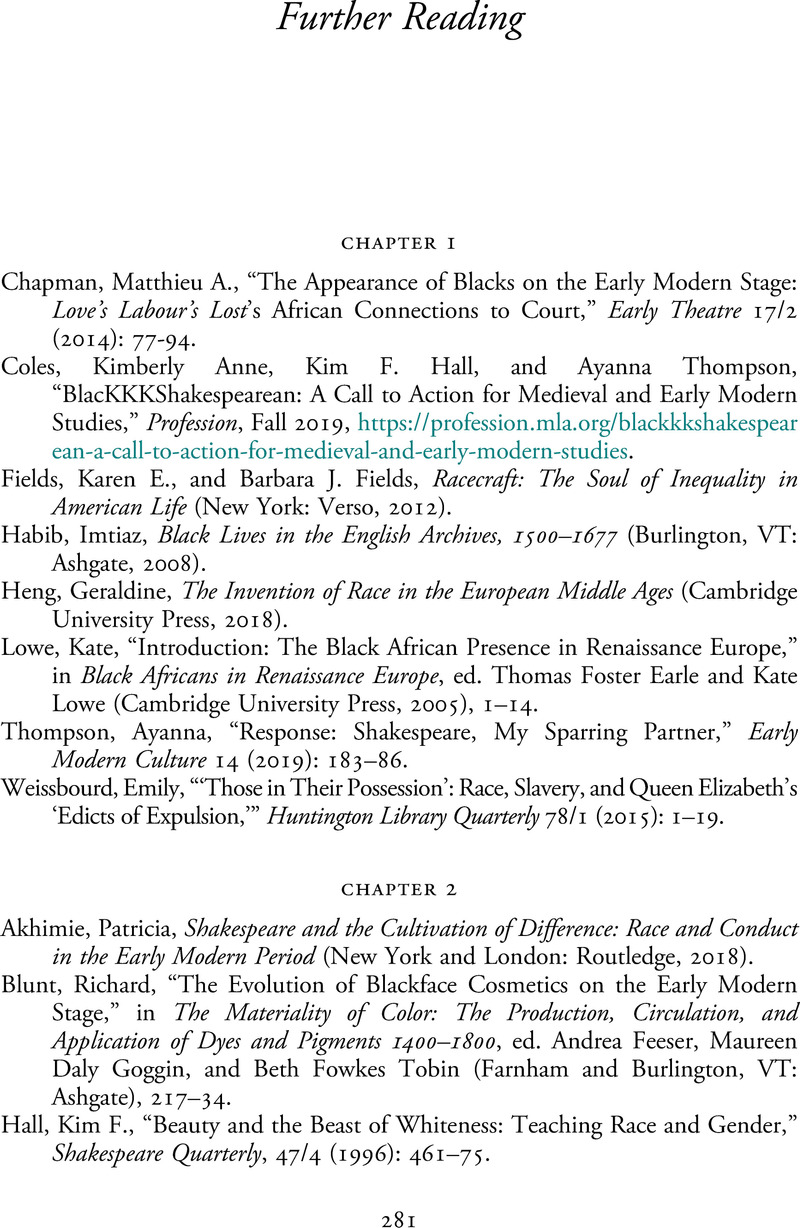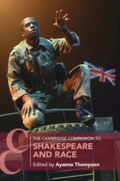Book contents
- The Cambridge Companion to Shakespeare and Race
- The Cambridge Companion to Shakespeare and Race
- Copyright page
- Contents
- Figures
- Contributors
- Note on Shakespeare Editions
- Chapter 1 Did the Concept of Race Exist for Shakespeare and His Contemporaries?
- Chapter 2 The Materials of Race
- Chapter 3 Barbarian Moors
- Chapter 4 Racist Humor and Shakespearean Comedy
- Chapter 5 Race in Shakespeare’s Histories
- Chapter 6 Race in Shakespeare’s Tragedies
- Chapter 7 Experimental Othello
- Chapter 8 Flesh and Blood
- Chapter 9 Was Sexuality Racialized for Shakespeare?
- Chapter 10 The Tempest and Early Modern Conceptions of Race
- Chapter 11 Shakespeare, Race, and Globalization
- Chapter 12 How to Think Like Ira Aldridge
- Chapter 13 What Is the History of Actors of Color Performing in Shakespeare in the UK?
- Chapter 14 Actresses of Color and Shakespearean Performance
- Chapter 15 Othello
- Chapter 16 Are Shakespeare’s Plays Racially Progressive?
- Chapter 17 How Have Post-Colonial Approaches Enriched Shakespeare’s Works?
- Chapter 18 Is It Possible to Read Shakespeare through Critical White Studies?
- Further Reading
- Index
- References
Further Reading
Published online by Cambridge University Press: 09 February 2021
- The Cambridge Companion to Shakespeare and Race
- The Cambridge Companion to Shakespeare and Race
- Copyright page
- Contents
- Figures
- Contributors
- Note on Shakespeare Editions
- Chapter 1 Did the Concept of Race Exist for Shakespeare and His Contemporaries?
- Chapter 2 The Materials of Race
- Chapter 3 Barbarian Moors
- Chapter 4 Racist Humor and Shakespearean Comedy
- Chapter 5 Race in Shakespeare’s Histories
- Chapter 6 Race in Shakespeare’s Tragedies
- Chapter 7 Experimental Othello
- Chapter 8 Flesh and Blood
- Chapter 9 Was Sexuality Racialized for Shakespeare?
- Chapter 10 The Tempest and Early Modern Conceptions of Race
- Chapter 11 Shakespeare, Race, and Globalization
- Chapter 12 How to Think Like Ira Aldridge
- Chapter 13 What Is the History of Actors of Color Performing in Shakespeare in the UK?
- Chapter 14 Actresses of Color and Shakespearean Performance
- Chapter 15 Othello
- Chapter 16 Are Shakespeare’s Plays Racially Progressive?
- Chapter 17 How Have Post-Colonial Approaches Enriched Shakespeare’s Works?
- Chapter 18 Is It Possible to Read Shakespeare through Critical White Studies?
- Further Reading
- Index
- References
Summary

- Type
- Chapter
- Information
- The Cambridge Companion to Shakespeare and Race , pp. 281 - 289Publisher: Cambridge University PressPrint publication year: 2021



